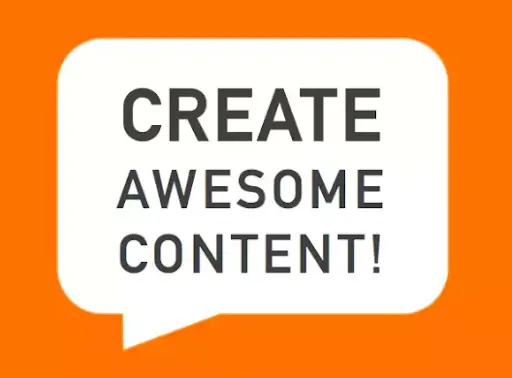After putting down ‘e-commerce website’ on your list of milestones and before actually launching it, your life as an entrepreneur will be pendulous through a lot of processes. One that will take you the longest to get through is choosing the right theme for your e-shop.
Ironically, Shopify has made launching a strikingly well-designed e-store a matter of minutes. It is home to over 100 beautiful themes. All you got to do is create a Shopify account, settle on a store design, add products, and begin the countdown to your first transaction with a customer. What prolongs the process is choosing which Shopify theme is right for your business’ e-store. They all look so aesthetically well done and fitting to your business that it can be an ordeal to settle for just one.
While sorting the good from the bad, you may render the services of a branding agencies. Elephantation are specifically skilled in foreseeing which theme would work best). Designers and developers associated with a big, renowned branding agency usually have a good idea about what’s trending. Also, because they would have tried most of the themes they would know the downfalls to each. But, if you want to save the extra spending, it’s no rocket science. You can very well choose the theme yourself by considering the following:
The Basic Stuff
Before scrolling through default themes and Shopify’s innumerable custom theme options, you must have a basic outline of what you’re trying to achieve with an e-store. Shopify allows you to start with a default theme and then tweak it as per your requirements.
However, if it’s your first time building an e-store, it is safer to go with a default theme. All Shopify themes are, more or less, suited to the fundamental e-store requirements. Also, a
The default theme gives you the time and opportunity to understand the functionality and usability of different theme styles and features.
Begin by getting the following 5 things straight:
- The mandatory features you must have on your e-store
- The product display (categorization, order, etc.)
- The number and type of products on display on the e-store
- Your budget (free or paid theme?
- What is and what is not working for your competitors
These five considerations will give you a real good heads up on the right Shopify themes for your business. Let’s see what else you must pay heed to.
1. Your Store Must Be Self-Explanatory
If your unique approach to building an e-store involves adding complex jargon and high-fi navigation, then I would advise against ‘going unique’. The intuitive approach to successful e-commerce websites suggests following the conventional design and widely accepted layouts.

When making your list of mandatory features, either tick ‘awesome aesthetics’ off the list altogether or push them towards the e
nd of the list. Everyone loves shiny outlooks, but flash over-function is only a delusion.
Krug’s first law of usability states, “Don’t make your users think.” The longer they think and take to figure out their way around a complex website interface, the more likely they are to add to your bounce rate.
Also, you sure want to make an e-store approachable and easily comprehensible to the target audience prospects of all web literacy levels. Therefore, give weightage to Shopify themes that are obvious and intuitive to navigate through over themes that are ostentatious and new to the masses.
However, once you have settled on an entirely functional theme, don’t forget to customize the color palettes, designs, and content tone according to that already maintaine
d by your business platforms. Build the e-store upon a style and structure similar to that of your social media profiles. You must have already figured out the mode of communica
tion that works for your target audience, casual or formal; reflect it through the e-store as well.
2. Think of Your Resources and Products
As mentioned earlier, a theme template adorned with catchy typography and beautiful demo images that you can’t afford to put in your own design is not right for you. Dynamic visuals play a good hand in keeping the attention and interest of some users; however, not all business websites can pull them off right.
If you don’t have the resources to fill up the space of a full-screen welcome banner on the homepage, don’t pick that theme, no matter how attractive it looks in the template.
Sometimes, you might have the photography equipment and professionals required for featured images that welcome customers on the homepage. But, your product’s high-res image would still not make a countable impression in that large banner space. That’s when you need to look for a theme where the product image strikes at first glance, or showcase your product from a different perspective.
Resources also include the expenditure you can spare for the e-store. Thankfully, Shopify got that covered for all, new fish as well as the wise and experienced. All of Shopify’s themes are finalized and published after rigorous testing and a strict approval process, even the free ones. So if you have survived on a shoestring budget up till now and are worried how heftily an impactful e-store might cost you, worry no more. Shopify themes vary in prices from null to around $299. The theme store offers 21 themes for free, but if you can afford it, you will do way better with a Premium theme.

The Premium themes quite obviously have more in store than the free ones and are priced at a range starting from $140 and going up to $180. Their higher functionality than the free themes helps you convert better and sell more.
3. Think Mobile
You are already well aware of the mobile’ invasion of desktop websites. A rough estimate states that more than 50% of sales through Shopify stores take place on mobile websites. Catering to this percentage of users, greater than desktop users, goes without saying, but you also specifically need to ensure that mobile users don’t receive a degraded or less impressive experience.
All Shopify themes have a responsive website design integrated by default because it is a major chunk of the design guidelines that all themes must fulfill before being accepted on the store. However, not all themes would be user-friendly on mobiles once you customize them to your brand.
Most website developers tend to check the mobile friendliness of the e-store only after they have hit publish. Shopify themes will give your e-store the benefit of fluidity and smooth navigation, but the outlook of all themes on mobile can’t be guaranteed beforehand.
So, after customizing a Shopify theme with your business and product details and before hitting publish, view the beta version on mobile. And again, pay special heed to the familiarity of the mobile website interface among your customers. Keep the bells and whistles to a minimum, where they don’t startle or pester the user.

4. Opt for Fast and Lightweight Themes
This, too, is an extension of the second point we discussed. The more flashy elements you add to the website, the clumsier it gets. Avoid themes choked with busy loaders, dynamic animations, fancy scrollers, etc.
These features might catch the attention of some of your users, apparently, but the reduced page speed that comes as a drawback to flashy website components will certainly not be able to retain these users. It is believed that if the Amazon site speed goes down by one second, it would result in the loss of $16B annually!
Moreover, they may act as a distraction from the more important content, such as product description, size chart, Call-to-Action, etc.
Even when customizing themes, add only the necessary elements and minimal illustrations. You can get away with simplicity because minimalism is the call of modern-day design. But you can’t get away with over-loaded, over-done, congested web designs. Even if they do not strain the eyes visually, it would be a pain in the neck to wait for them to load completely.

5. Takeaway
No two themes are created equal, and no two e-stores are built alike. So, if my extra emphasis on simplicity and functionality over bells and whistles has got you worrying about being just another ordinary e-store on the web, you’re putting your worry in the wrong place.
Your e-store is going to reflect your business atmosphere and market the uniqueness of your products. If you are offering quality in this respect, you need to invest very little in the fanciness of the website.
Going with a minimal theme and adding clear, high-quality images and user-friendly content will do just fine for you. Stay within your budget allotment and product requirements, fulfill the needs before the wants, double-check for smooth mobile usability, and don’t go overboard with any element of the website. And, you’re good to go.
Rest assured, the basic structure of all Shopify themes has been tested for perfection. The tough part is finding which one is perfect for your business website and target audience.
(Photo credits: Shutterstock)






